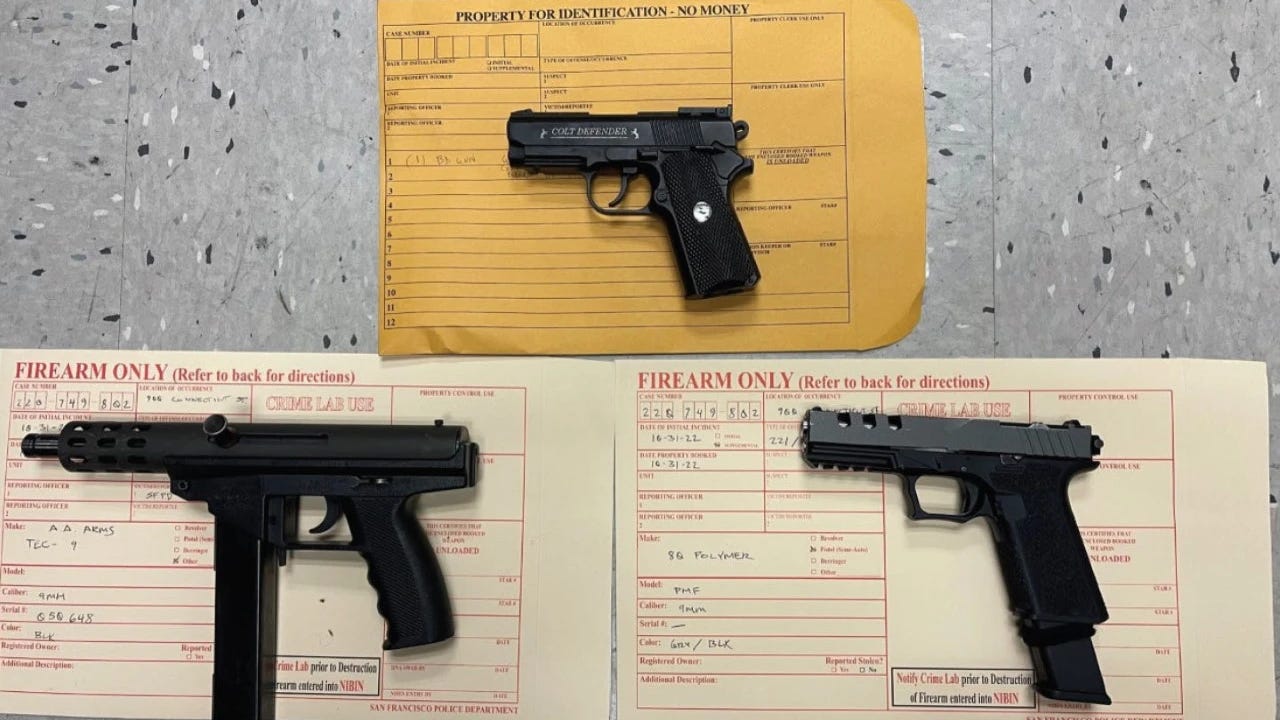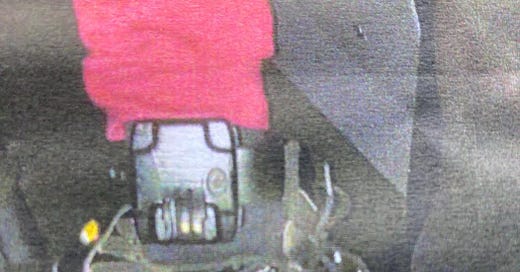Vanishing Juvenile Crime? Details of a Violent Halloween Carjacking
City kids running around with semiautomatic weapons
On Halloween afternoon, Milton had just purchased food from the Island Cove Market on Treasure Island. As he exited the store, he saw a group of juveniles standing around a 2005 Infiniti. Milton was unaware that the Infiniti had just been carjacked.
Milton sat down into the driver’s seat of his twenty-year-old Mercedes, when the four juveniles approached him. Juvenile #1 opened Milton’s car door with a pistol in his hand and said, “Get the f.ck out. You know what this is, we’re taking your sh.t.” Considering that it was Halloween, and the four juveniles were wearing masks, Milton at first thought this was a prank.
Milton was unaware that Juvenile #1 had been arrested for carrying a loaded firearm three times in the past 18 months. Nor did Milton see the GPS monitor that Juvenile #1 was wearing on his ankle.
Juvenile #2 entered the passenger side of Milton’s car. Milton was unaware that in the past two years, Juvenile #2 had been arrested for two robberies and one aggravated assault.
Milton exited his Mercedes and then returned, hoping to retrieve his wallet out of the car. But in response, Juvenile #3 lifted his shirt to expose a semiauto gun, which caused Milton to retreat.
Next, Juveniles #3 through #6 got into Milton’s car. Juveniles #5 and #6, were not directly involved in the carjacking, and appeared to be merely in training. Then the six were off towards San Francisco in Milton’s car.
Less than 15 minutes later, Bayview Station’s Officers M’bouroukounda and St. Clair spotted Milton’s Mercedes at the bottom of Potrero Hill on Connecticut Street. The car was rolling four-deep, with the two trainees apparently haven been sent home to study their Juvenile Violent Crime Training Manuals. At Cesar Chavez and Pennsylvania Street, St. Clair activated his car’s siren, and Juvenile #1, driving the Mercedes, was gone.
SFPD’s policies disallow officers from pursuing fleeing criminals if the underlying crime is property related, or the suspects can be captured later without imposing greater risk to the public. A carjacking with multiple guns is an exception to SFPD’s non-pursuit policy.
Juvenile #1 fled onto northbound 280. Exiting at King Street by the ballpark. Jammed in traffic, Juvenile #1 hung a U-turn and drove the wrong way on King Street--the public be damned. Juvenile #1 then took SFPD on a highspeed tour of the South of Market area, Howard, Fremont, 3rd and 5th Streets, the Embarcadero, before returning back to the Bayview one-car, Potrero Hill.
On the 900 block of Connecticut Street, the unlicensed Juvenile #1 ran into a parked car. As their Juvenile Violent Crime Training Manual prescribes, the four juveniles took off running in different directions before numerous SFPD officers tracked them down in the higher elevations of Potrero Hill.
SFPD recovered the following guns:

Not only did SFPD then contact the children’s parents, but per Welfare and Institutions Code section 625.6 the SF Public Defender’s Office was also contacted. Section 625.6 was signed into law because Governor Jerry Brown was concerned that children arrested with guns might spontaneously disclose the adults that gave them those guns before the children received legal representation.
Increasing juvenile violence
Years ago, in an incident only a couple hundred feet from this episode, my partner (GBA) ended up holding an infant during a family dispute. He turned to me, “Just think, I could take this baby and runaway, and the baby would have a chance at becoming President of the United States. Or I could leave him here, and he’ll probably end up with an arrest number.”
Despite the sarcastic tone of this article, the reality is these kids need help. They already have lengthy juvenile criminal resumes and a life expectancy of less than 30 years of age. They need guidance, but not through the public defender and progressive excuse-laden way, which scapegoats others and omits personal responsibility.
This pervasive misplacing of blame was further perpetuated by the San Francisco Chronicle’s 2019 Vanishing Violence series, where they made the argument that juvenile crime in California has been decreasing, and therefore Juvenile Hall should be closed.
There are two missing material facts that the Chronicle withheld:
1) The Chronicle measured arrests, not the quantity of crimes that juveniles were named as suspects. The Chronicle’s analysis is tantamount to saying that if Steph Curry scored fewer points, therefore he took fewer shots. No, Curry could have missed more shots than usual.
2) Governor Jerry Brown’s 2017 signature on Senate Bill 395 made it significantly more difficult for police officers to converse with juveniles 15 years or younger. That law was strengthened in January 2021, to make it now almost impossible for a police officer to engage with a juvenile of any age.
Unfortunately, false statistics can’t hide the problem of juvenile crime, as it will continue to persist until there is an honesty in discussions.




As you pointed out at the beginning of your article, these “juveniles” are repeat offenders of violent crimes and weapons possession. As you well know, most “kids” don’t start their criminal activity by carrying guns and carjacking victims. They all have had previous contacts with L.E., and no one did anything out it. Not their parents, teachers, juvenile probation, the courts, older siblings, or other family members. So, now it’s the victims that have to suffer and police officers that have to deal these individuals with zero support from the legal system. Great article…Keep ‘em coming!
Don’t believe your lying eyes, juvenile crime is disappearing!